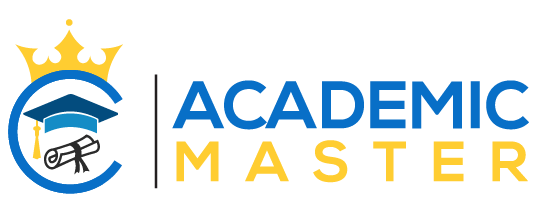Introduction
A survey conducted in the United States in 2011 reported 675, 000 victims of child abuse and neglect. Despite the fact that the number replicates approximately 1% of American citizens under the age of 18 years, available evidence proves beyond doubt that child maltreatment is underreported. Child maltreatment increases the risk of drug abuse, violence and delinquency behaviors, and depressive symptoms among the maltreated pediatrics. Several Federal governments of United States have enacted laws which designate some professionals as mandated reporters of child abuse and this has led to better identification of maltreated children or those at high risks of maltreatment.
Emergency Department (ED) nurses are the ones who often come into contact with maltreated and abused children yet according to a research conducted by ABS (Australian Bureau of Statistics), nurses do not top in the list of reporters of child abuse. Limited evidence is available on what motivates the process of reporting victims of child abuse to the police, parents, children agencies, friends and neighbors. Nurses are in critical position to report pediatric maltreatment, barriers curbing them prevents them from doing so. The research proposal effects integrative review of the available literature with an objective of identifying potential barriers hindering nurses from reporting the victims of child abuse.
Literature Review
The available literature reveals several barriers that inhibit nurses from reporting victims of child abuse. These barriers are classified in two broad categories: Lack of knowledge about child maltreatment and anticipated effects of reporting child abuse.
Lack of Knowledge about Child Maltreatment
Pediatrics abused or maltreated are not commonly presented to clinical environments. A research conducted by Flahert et al (2016) revealed that many healthcare professionals reported that they have never treated any victim of child abuse. There is high probability that child maltreatment goes unnoticed in clinical environments due to the vast substantiation of child abuse. One of the commonly reported barrier among many healthcare settings is lack of training and this causes pediatric nurses to lack competency in recognizing the signs and symptoms of child maltreatment. Available evidence points that clinicians with knowledge concerning child abuse are more likely to notice the problem than their counterparts without the skills. However, education on child maltreatment remains sparse.
Research points that majority of ED and pediatric nurses receive less than 7 hours of didactic education on child abuse. A survey conducted by McCathy (2017) pointed that the median time taken by tutors and lecturers in teaching about child maltreatment in schools is two hours. Moreover, child maltreatment education varies between specialties resulting to differing competence levels among the trained professionals. A research conducted by Flaherty et al (2014) established that participants in one focus group commented on the child abuse training imparted on them as “haphazard and infrequent.” Available evidence also shows that no state medical board has ever mandated a specific type of education as obligatory for renewing of the licences (American Medical Association, 2015). The only exception among U.S states is Lowa that has passed laws to make it mandatory for all APRNs dealing with pediatrics to acquire frequent trainings on child maltreatment identification process and reporting.
Anticipated Effects of Reporting Child Abuse
The decision of “No to reporting child maltreatment” is a complex decision making process. Previous literature identifies so many barriers inhibiting child abuse reporting. Some studies suggest that child abuse is extremely challenging in terms of psychology making it too difficult for the healthcare provider to accept (Jones et al., 2015). It is not an unusual occurrence to receive reports denying that a behavior or injury resulted to child maltreatment. In the past, sexual harassment reports have been described away as child fantasies.
The impacts of Child Protective Services (CPS) system on pediatric nurses is one of the recurring barriers hindering the reporting of child abuse cases. Strained relationship between clinicians and CPS staff and the increasing perceptions on the inadequateness and harms associated with CPS interventions on the child or family plays a critical role in discouraging pediatric nurses from reporting child maltreatment cases. Literature suggests that in some cases, pediatric nurses feel that child maltreatment management staff are more superior and thus adequately fits in CPS involvement.
The legal environment of work for the pediatric nurses creates a barrier to reporting child abuse cases. Most state laws often make it compulsory for pediatric nurses to report suspicions or evidences of neglect to the designated personnel. These laws cause a lot of problems due to lack of unified definition of the constituents of suspicion. A research conducted by Levi & Loeben (2014) comprehensively investigated the reasonable suspicion concept in the perspective of legal requirements and cognitive aspect and came to a conclusion that the term is ambiguous. The failure to establish clear threshold requirements for suspicion results to inconsistency in reporting cases of child maltreatment even among the experts of child abuse. Many of the pediatric nurses decide not to report instances of child abuse to evade the flaws of the law. There is a lower probability that any healthcare professional who has ever testified a case of child maltreatment will do so in the future. Furthermore, litigation fears or previous suing minimizes the chances of reporting child abuse.
Besides, the relationship between the pediatric nurse and the family significantly affects the decision to report. The clinician/family relationship may either hinder or encourage reporting behavior. If the pediatric nurse is not familiar with the child or family members, then he or she is likely to report any incident of child abuse to the designated personnel. A closer relationship between the pediatric nurse and the maltreated child or family member hinders reporting. However, in some cases, a close relationship between the healthcare professional and the family members or child encourages reporting.
Conceptual Framework
The conceptual framework that will be adopted for this research proposal is Ecosystems theory. It is broad and synthesizes ideas from various human behaviors and social theories related to the work practice. For instance, the theory incorporates concepts from ecology, ego psychology, the Gestalt school of psychology, ethology, stress theory, role theory, humanistic psychology, general systems theory, the dynamics of power relationship, anthropology, and the symbolic interaction.
The application of Ecosystem theory fits in a variety of environments since it entails concepts that focuses on the interactions and relationships among various people, teams, societies and organizations. Besides, the theory views on the manner in which environment impacts actions, beliefs and individual choices. The theory serves to give us a mirror on how we can view a challenge in the perspective of a larger system containing the problem. The theory focuses on person-environment as a unified system where human beings and natural environment shape one another. Therefore, it is impossible to view one system without looking at the other, or simply, environment influences human behavior.
According to the ecosystem theory, human beings connect with and acts simultaneously in various systems. These interrelated systems are known as micro, macro and mezzo systems. A micro system is used to refer to an individual and consists of social, biological and psychological system. The systems entails a series of activities, functions and interpersonal face-to-face relationships in the immediate environment. Mezzo systems denotes small groups encompassing linkages and processes that occur between the developing individual, family, and work groups. Finally, macro systems describes larger groups focusing on economic, social and political conditions and regulations affecting the quality of life and the overall access to resources of the human beings.
In most of the times, ecosystem theory is applied as a frame of reference especially by social workers in their daily roles as they perform the necessary interventions on clients struggling with daily life events. The social workers normally focus the extent of person-environment goodness-of-fit, or simply, the interaction of human beings with their settings and at the same time evaluating whether the environment supports the individual with the appropriate resources and security to improve well-being and development. Additionally, ecosystem theory aids the social worker with interventions that are most suitable for the client based on individual needs of that particular client.
When doing the project, the ecosystem theory will be applied as a theoretical foundation crucial for thinking and progressing with the project. There is no evidence showing the application of ecosystems theory in studying this particular targeted population of pediatric nurses, clinicians and CPS staff in the past. Usually, the process of viewing human behavior usually starts at the micro level with the person and then extends to mezzo and macro levels. The ecosystem theory correctly applies in pediatric nursing environment because it assists us in understanding the relationships, interactions and influences occurring between multiple systems in the pediatric nursing environment. Therefore, it is easy to determine the factors that inhibit child maltreatment reporting in pediatric nursing.
Research Hypothesis/Questions
The research question used in this proposal is “what are the barriers inhibiting child abuse reporting in pediatric nursing?” The first hypothesis is that pediatric nurses encounter more cases of child abuse and thus are more familiar with the management of such conditions. Besides, it will also be hypothesized that pediatric nurses have improved ways of dealing with child maltreatment, including reporting such cases to the appropriate personnel, because they are more mature and trained on ways of handling victims of child abuse.
Methodology
The proposal assumes a descriptive-exploratory qualitative method with phenomenology design in the data collection process. Exploratory research highlights and explores un-interpreted phenomenon to create a better understanding of the problem. The method provides extensive, rich data and descriptions. In some cases, exploratory methods focuses on some problems which are unknown and seeks methods of solving them which helps in providing directives for future research. On the other hand, qualitative research is mostly applied in the fields of education and social sciences to study complex human behaviors. It is a systematic and subjective approach which highlights and explains the experiences of daily life and also serves to assign meaning to them. The method allows researchers to thoroughly explore behaviors, various perspectives and experiences in life hence helping in the discovery of complex situation through an holistic framework. Understanding human world through scientific research is extremely difficult and challenging. However, we always try to work on truth which helps us in deriving solutions.
The descriptive-exploratory qualitative method with phenomenology design will be very useful in exploring a complex behavior in pediatric nursing that is reluctance to report child maltreatment and drawbacks which lead to this phenomenon. Sampling will be done in pediatric care facilities in the city of Florida. The data obtained from this sample population will be analyzed to reflect the factors that limit reporting child abuse in the United States. The selected sample size will be manageable for this study. The project will employ two main measurement tools to evaluate the results obtained. These include the Athena Quotient (AQ) tool and the Likert Scale. The AQ will be used in evaluating the judgement of the participants concerning the issue of child maltreatment reporting. The Likert Scale will also be used in evaluating the quality of evidence obtained from strong to weak.
Plans for Data Collection and Analysis
Any method in which the participants of the study deem suitable for describing their lived phenomenal experiences will be applied in gathering data for the phenomenological study. In this case, interview will be the best method to gather data concerning the barriers which prevent nurses from reporting child abuse cases. Therefore, I am planning to use it extensively as the primary method of gathering data. Furthermore, other methods such as pediatric nurses report or even oral-self report describing some of the drawbacks in reporting cases of child maltreatments will be used in supplementing the quality of data which will be obtained from the primary method.
I plan to make all the efforts possible in ensuring that I will be as non-directive as possible in the data collection process. For instance, I would request the pediatric nurses to describe some of the barriers that inhibit them from reporting victims of child abuse without directing them in any way. However, I will encourage the participants to give full descriptions of their experiences which will include their thoughts, images, sensations, memories and feelings. I am also planning to request for clarifications on any unclear information presented during the interviews and self-reports.
In the data analysis process, I am planning to apply emergent strategy because it allows the analysis method to follow the data itself which finally emerges or changes in the course of analysis. I will focus on deriving a deep understanding from the data provided. Additionally, I am planning to abstract out themes to get critical meaning from the pediatric nurses’ experience.
Budget
The following is a budget sample for the whole research project.
| Budget Item | Quantity | Cost per Item | Total |
| Transcription of interview materials | 20 interview materials | $3 | $60 |
| Pediatric nursing reports | 20 materials | $2.5 | $50 |
| Oral report papers | 20 reports | $2.75 | $55 |
| Accommodation | 2 months | $3, 000 | $6, 000 |
| Transport | – | $750 | $750 |
| Travel insurance | 2 months | $100 | $ 200 |
| Research Assistant | – | $2, 000 | $2, 000 |
| $9, 115 | |||
The following is the study timetable
| April | May | June | July | |
| Proposal Writing | ||||
| Sampling | ||||
| Data Analysis | ||||
| Project Writing |
Appendix
Pediatric Nursing Form
This is the structure of the pediatric nursing form which was supplied to the participants of the study to fill.
You have been selected to assists us in surveying reporting of child abuse cases. You were deemed suitable for this survey because you frequently interact with maltreated children in the course of executing your duty. Please answer all the questions in the spaces provided. Note that the participation in this survey is voluntary and your responses will be kept confidential. The survey will take a maximum of 10 minutes.
- For the last 5 years, have you offered medical services to children below the age of 18 years? Yes No
- During the course of executing your duty have you ever encountered any maltreated or neglected child? Yes No
- Are there any laws implemented in your state concerning child maltreatment and neglect? Yes No I don’t Know
- If there are any laws regarding child abuse, what personnel is designated to handle the issue?
- Has your present healthcare facility implemented guidelines for reporting suspected cases of child abuse? Yes No
- Have you ever reported any case of child maltreatment and neglect? Yes No
- Have you ever faced threats regarding lawsuits due to reporting a case of child abuse? Yes No





